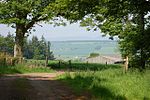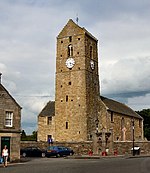Ochil and South Perthshire (UK Parliament constituency)
Constituencies of the Parliament of the United Kingdom disestablished in 2024Constituencies of the Parliament of the United Kingdom established in 2005Historic parliamentary constituencies in Scotland (Westminster)Politics of ClackmannanshirePolitics of Perth and Kinross

Ochil and South Perthshire was a county constituency of the House of Commons of the Parliament of the United Kingdom. It elected one Member of Parliament (MP) by the first-past-the-post system of election. The constituency was created for the 2005 general election as a result of the Fifth Review of the Boundary Commission for Scotland. It has been represented since 2019 by John Nicolson of the Scottish National Party (SNP). The seat was abolished prior to the 2024 general election and replaced by parts of five other constituencies.
Excerpt from the Wikipedia article Ochil and South Perthshire (UK Parliament constituency) (License: CC BY-SA 3.0, Authors, Images).Ochil and South Perthshire (UK Parliament constituency)
Geographical coordinates (GPS) Address Nearby Places Show on map
Geographical coordinates (GPS)
| Latitude | Longitude |
|---|---|
| N 56.281 ° | E -3.545 ° |
Address
Middle Balquhandy
PH2 0RB
Scotland, United Kingdom
Open on Google Maps









